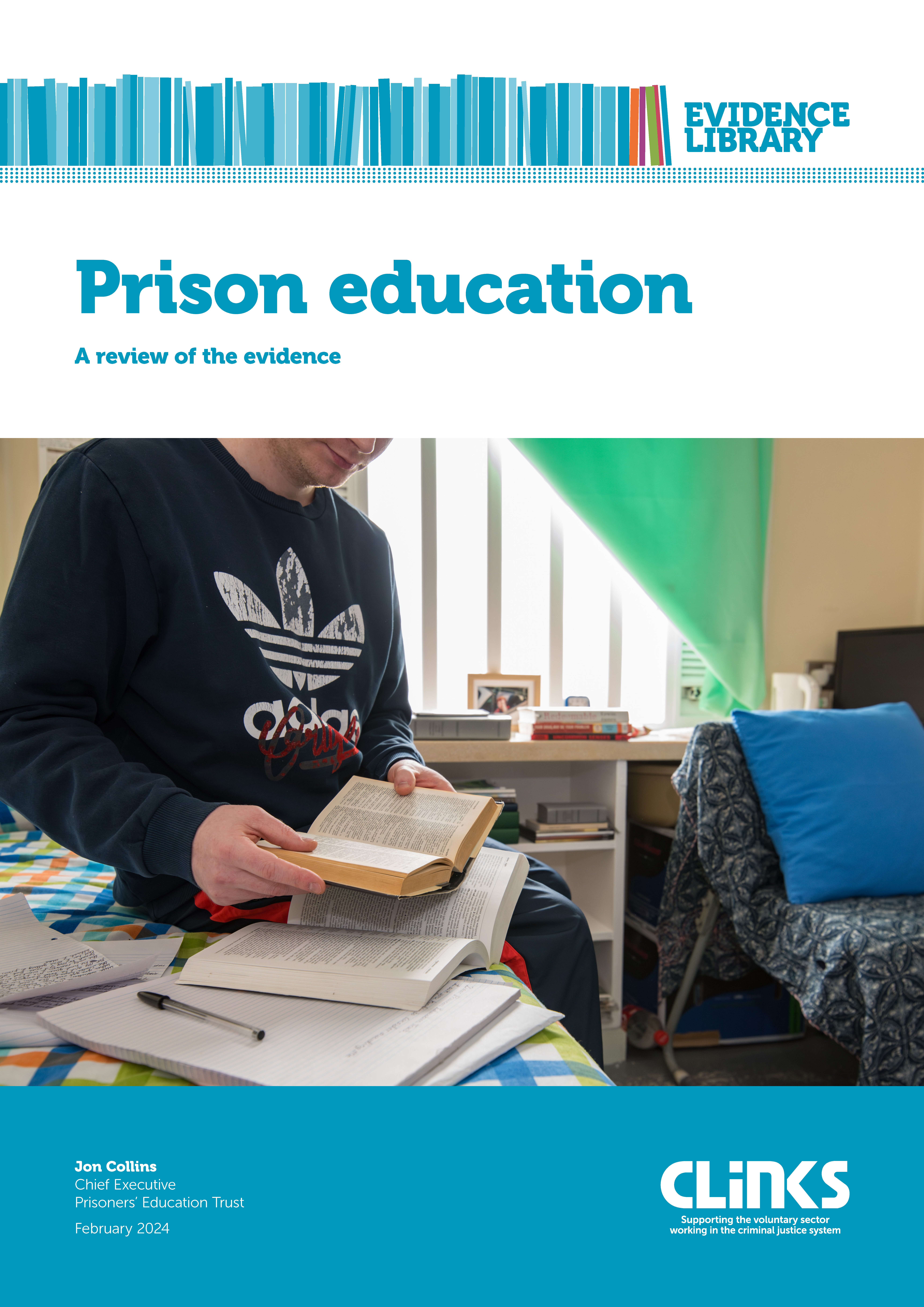A new review for Clinks, the infrastructure body for the voluntary sector in the justice sector, sets out the evidence on the impact of prison education. Its author, PET Chief Executive Jon Collins, gives an overview.
One of the best bits of working at PET is hearing directly from current and former learners about the difference that their participation in education in prison has made.
We speak to people who are doing our courses on our Advice Line, capture their views on our evaluation forms, and receive back hundreds of the postcards that we distribute to learners. Each one tells a story – in a few words or sentences – about the transformational power of education. As one said:
Successfully completing my course has got me one step closer to my goal of becoming a positive role model for my son. Thanks for all your help, it’s changed my life.
But as well as our own experiences, and those of other organisations working in prison education, there has been a significant amount of research examining the impact that access to education in prison can have.
This has included the research that the Ministry of Justice’s Justice Data Lab has done with PET’s own data, but also broader research in both the UK and the US.
Looking at the evidence
As a contribution to the Clinks online evidence library, I have written a short report that brings together and summarises this evidence.
This report shows, as anyone working in this field would expect, that there is robust international evidence that participating in education while in prison reduces the likelihood of reoffending on release and increases the chance of securing employment.
Evidence also shows that funding prison education is cost effective, something that the Ministry of Justice may want to bear in mind as they finalise plans for the new Prison Education Service (PES) contracts.
What makes prison education effective?
The report also looks at what we know about why prison education works and what makes it effective.
The evidence here is less extensive, but does provide some indications. Among them are good partnership working between the provider and the prison and the flexibility of both the provider and the prison (which in turn relies on contracts that allow flexibility).
Barriers to effective delivery identified in the available research include a lack of resources and funding rules and processes that were viewed as inflexible or insufficiently tailored to a prison setting. Again, all of these are issues that are relevant for the new PES contracts.
More research needed
Finally, the report looks at where more evidence is needed. This includes more research on whether prison education is experienced differently by different groups of learners, including whether it is as accessible and effective for women as it is for men.
More research also is needed on the impact of participating in education on mental health, wellbeing and other “softer” but no less important outcomes such as self-confidence and family relationships.
We need to know more about which different elements of participation in education have the greatest impact too.
Making access a priority
While there is always more research that could be done – and there are some gaps that could usefully be filled – the evidence in support of prison education is compelling and clear. It reduces reoffending and improves employment outcomes. And it is cost effective.
Given this, the priority for policymakers should be to ensure that as many people in prison as possible are able to access education that meets their needs and will help them to turn their lives around and thrive.
Prison education – A review of the evidence is available on the Clinks website.
